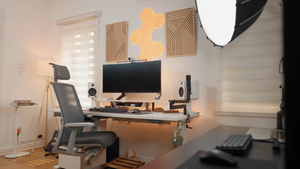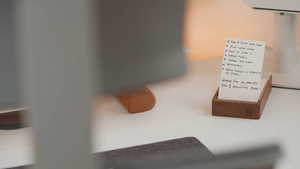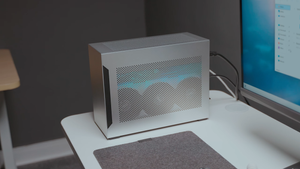Building a Racing Simulator Setup at Home
Building a home racing simulator has been an exciting project for me especially now that I’m mostly gaming on my PC. I had two major priorities for my setup: aesthetics and functionality.
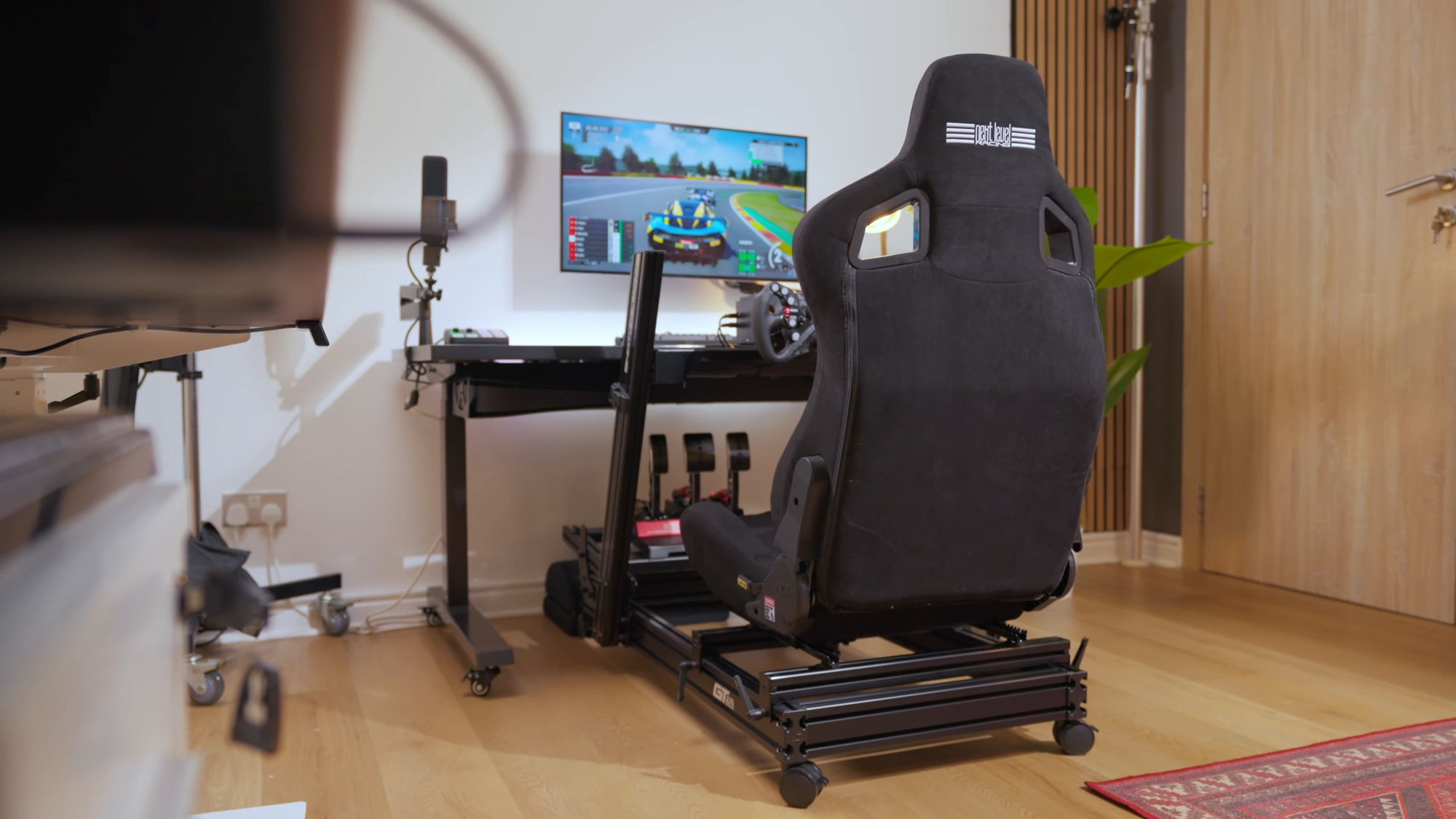
Building a home racing simulator has been an exciting project for me especially now that I’m mostly gaming on my PC. I had two major priorities for my setup: aesthetics and functionality. Functionality because this was my previous racing sim setup:
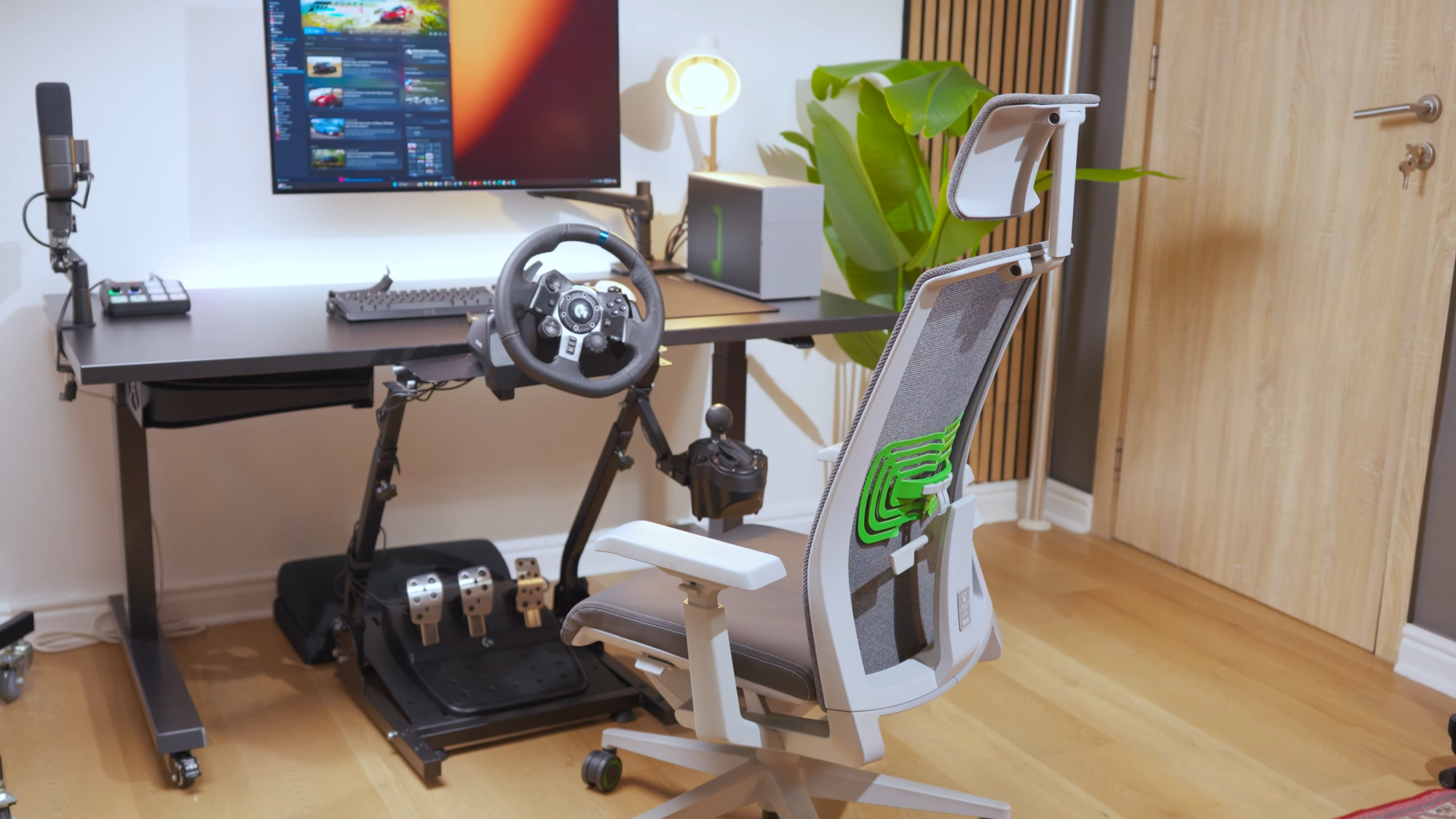
It was an entry-level setup that I built with the Logitech g923 to get a feel of immersive racing as a noob just getting into this hobby.
I didn't enjoy racing this way mainly because whenever I'd sit to race, the rollers on my chair made it so difficult to get a consistent driving experience. If I stomped on the pedal a little too hard, my chair would always roll back which made it a little frustrating at the time.
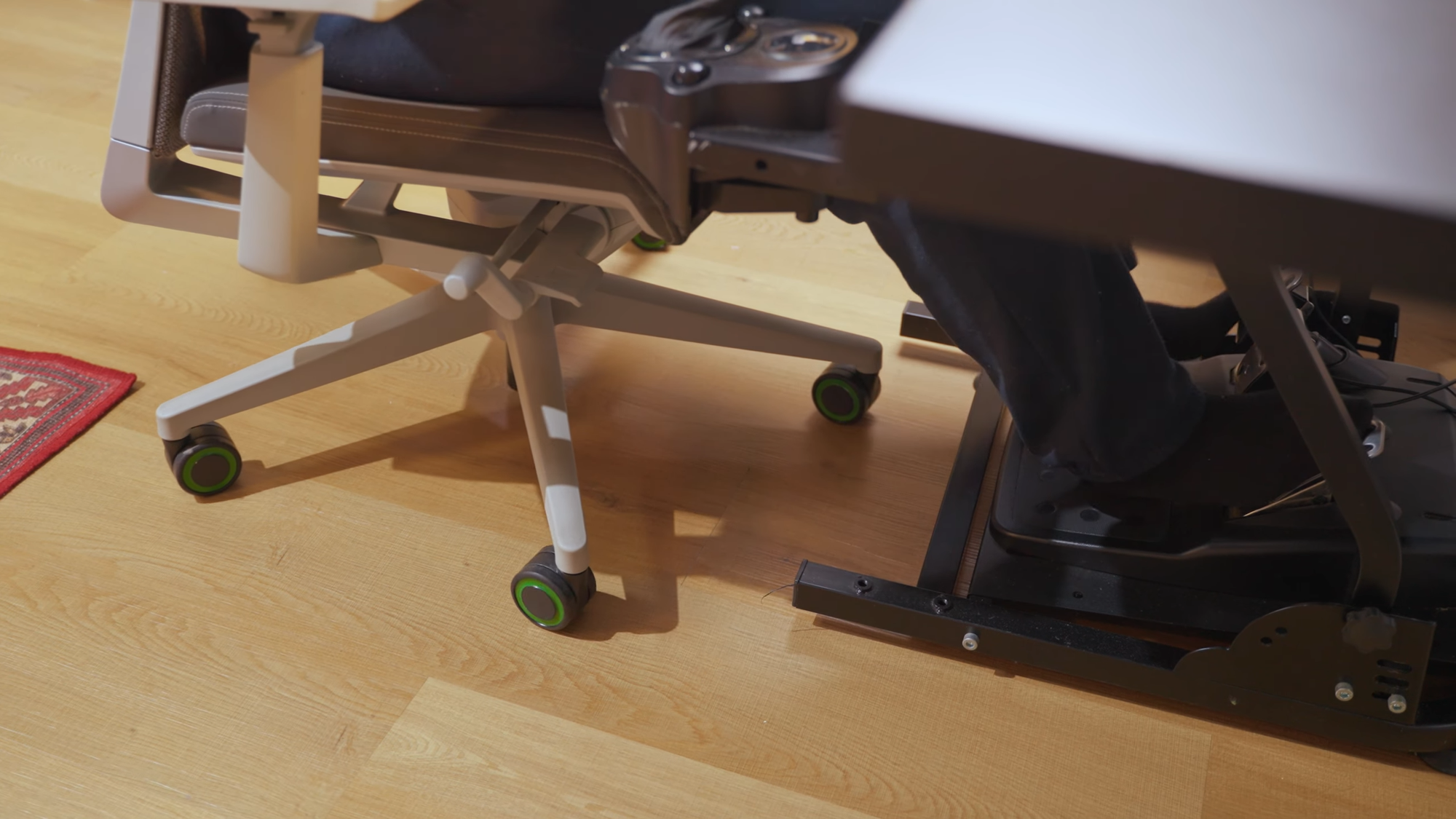
So, I decided to build a proper racing sim setup, but it needed to be small and compact because I did not have a lot of space in my office to work with.
PS: Some links below are affiliate links, for which I receive a small commission at no extra cost to you. When you purchase through the links, you support my content. Thank you.
The Heart of the Setup: The Main Rig Cockpit
The cockpit is the central component of this setup and I chose the GT Elite Lite Cockpit.
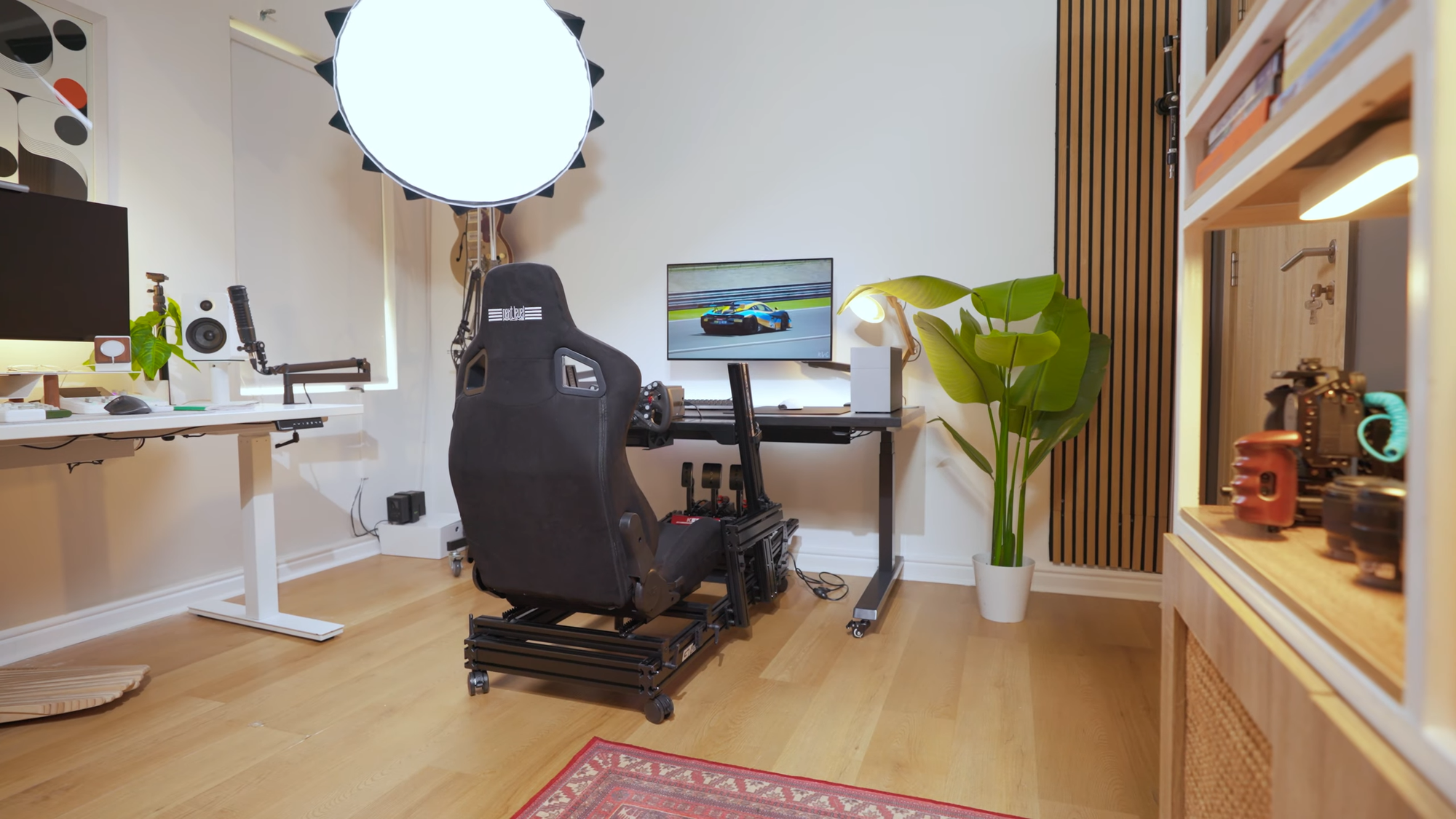
The aluminum profile structure of this cockpit is well known for its sturdiness, which is important for intense racing sessions. Its design offers versatility for various racing simulations by supporting several driving positions, including GT and Formula styles.
Assembly took a couple of hours but the physical manuals helped show a detailed step-by-step guide for building this rig.
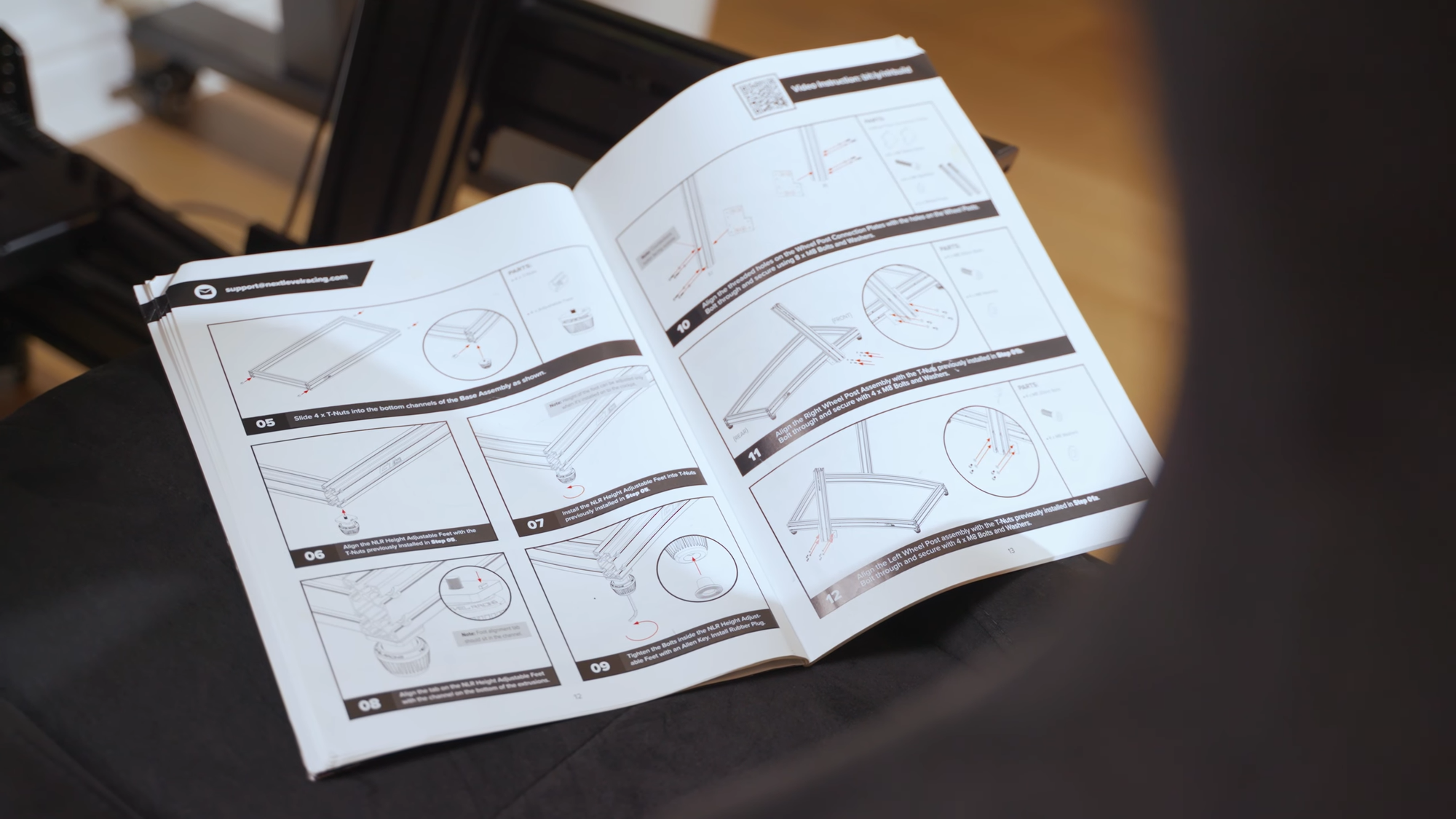
One thing that's important to note especially with these types of boxy 80/20 aluminum profiles is that it's slightly more difficult to adjust anything unlike in a tubular cockpit like the Tr8 Pro.
I went with a GT-sitting position mainly because I intend to try a bunch of different racing games in the future, and I didn't want to lock myself into the F1-sitting position.
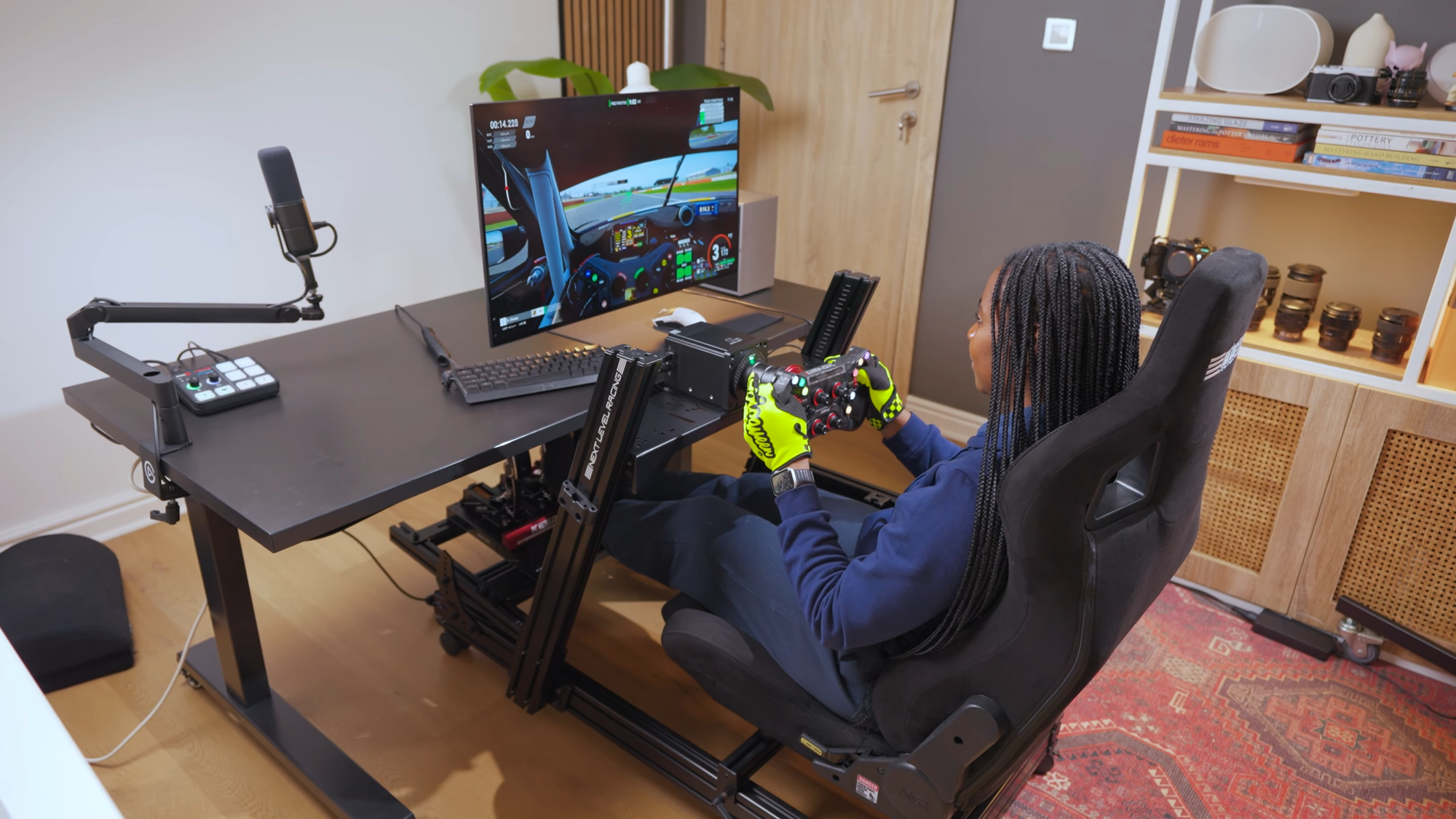
Command Central: The Wheelbase
The Simagic Alpha Mini Wheelbase serves as the command center of my simulator, responsible for the amount of force feedback and detail you feel when driving.
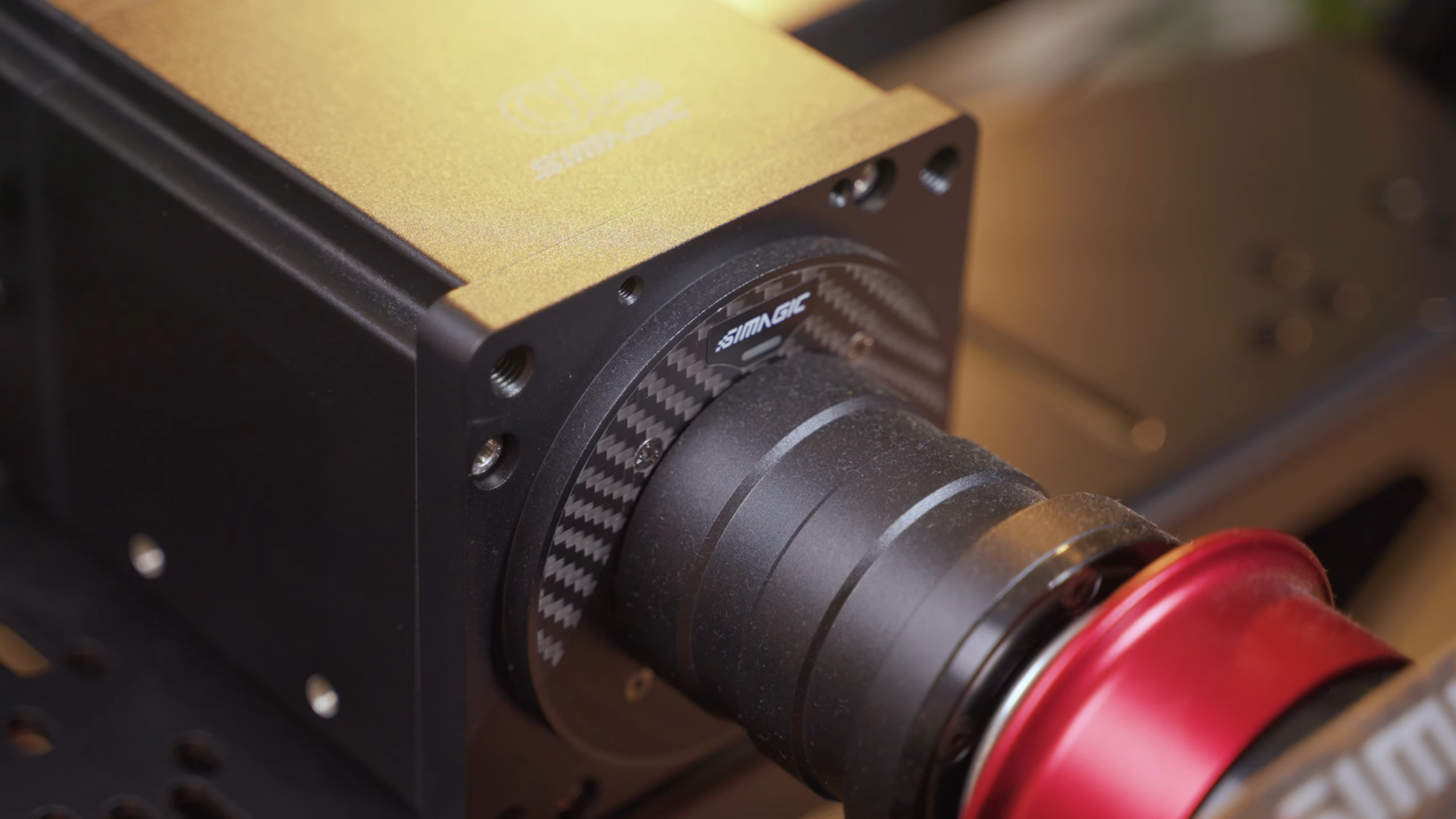
Despite its compact size, this powerhouse delivers a hefty 10 Nm of torque, so it feels smooth and easy to pick up on small details like the tyre slipping when oversteering or the rumbles from going over a curb. It’s strong but good enough, perfect for both beginners and serious racers. It's also a full metal construction with no plastics, which makes it solid enough to last.
I haven't felt any weird delays between inputs and what happens on-screen. The Alpha Mini responds instantly, you almost feel one with the car. I think that it gives pro-level experience on a budget.
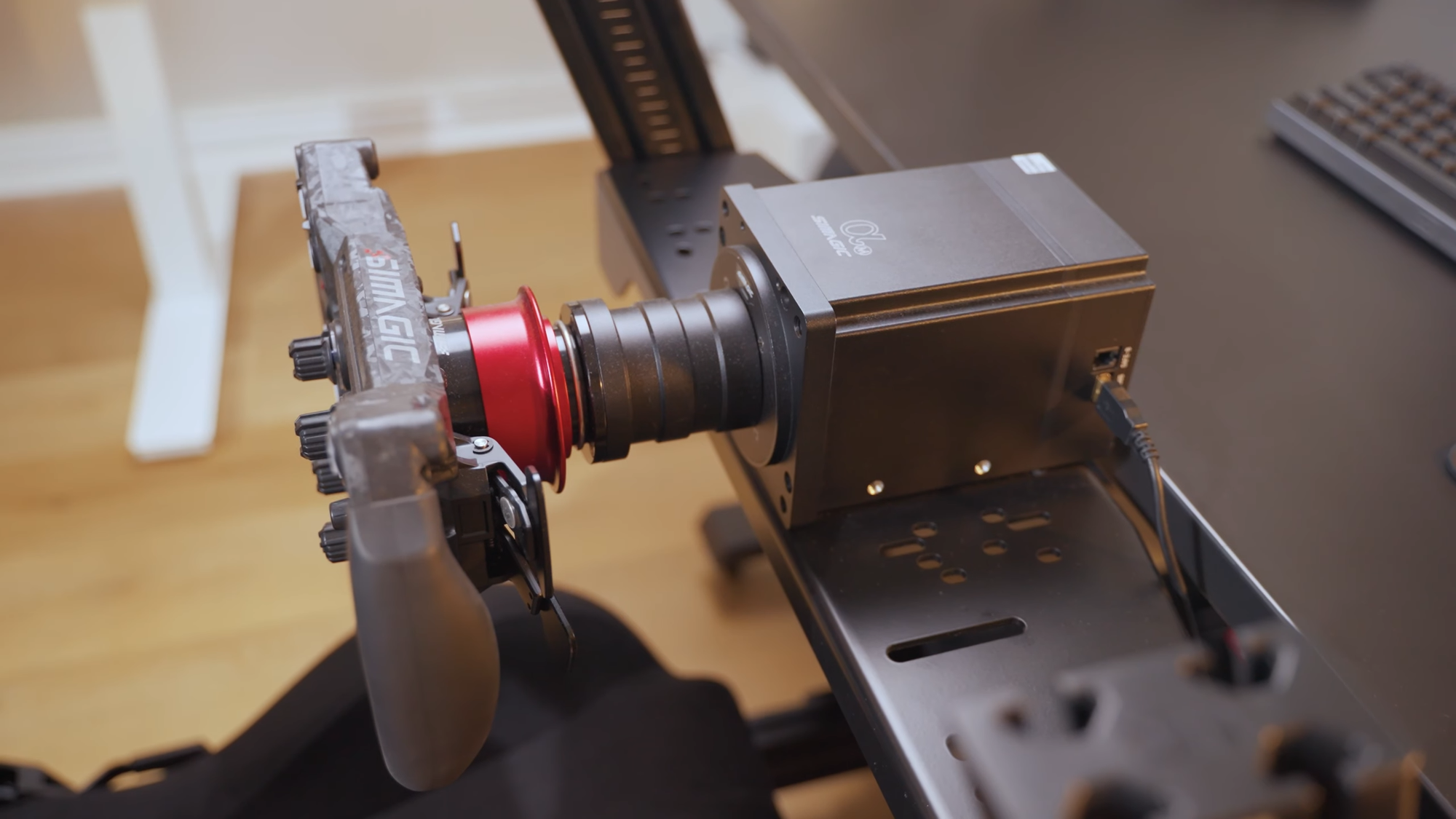
Steering Precision: The Wheel
For the steering wheel, I went with the Simagic GT Neo. I love the look and feel of it, plus at $289, I couldn't find anything else that looked this good and was at the same price point.
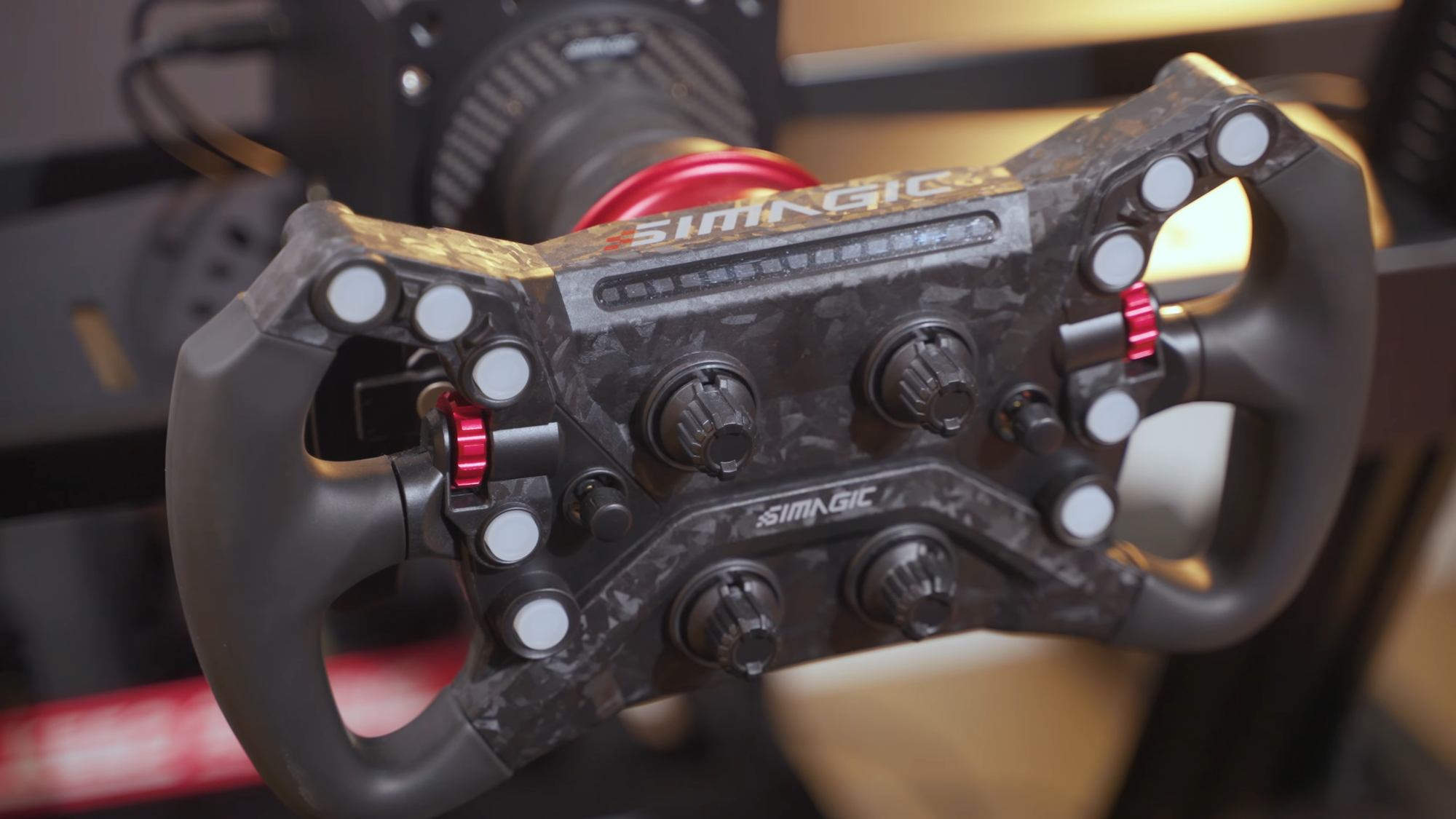
I’d say that it offers great value without compromising on quality and looks really stylish and sophisticated. The Alcantara-style grips feel amazing, giving total control without any sweaty slip-ups. The buttons and dials feel great and are customizable with stickers. It also has rotary encoders for quick adjustments, so you can tweak traction control or change settings easily.
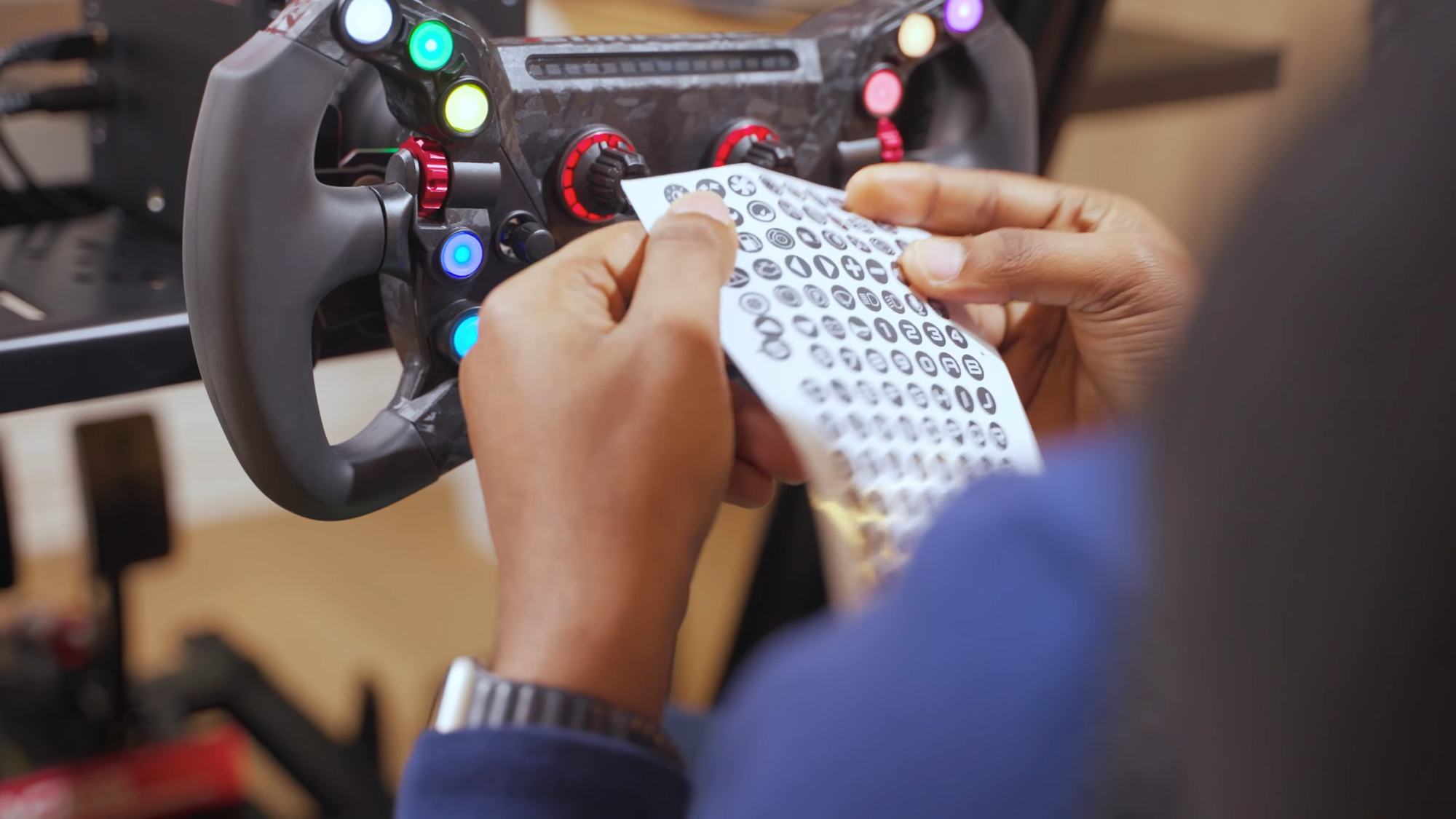
I absolutely love the feeling of the magnetic paddle shifters because they're not too loud or clanky plus the quick-release mechanism between the wheel and the wheelbase ensures seamless transitions, allowing you to switch components effortlessly.
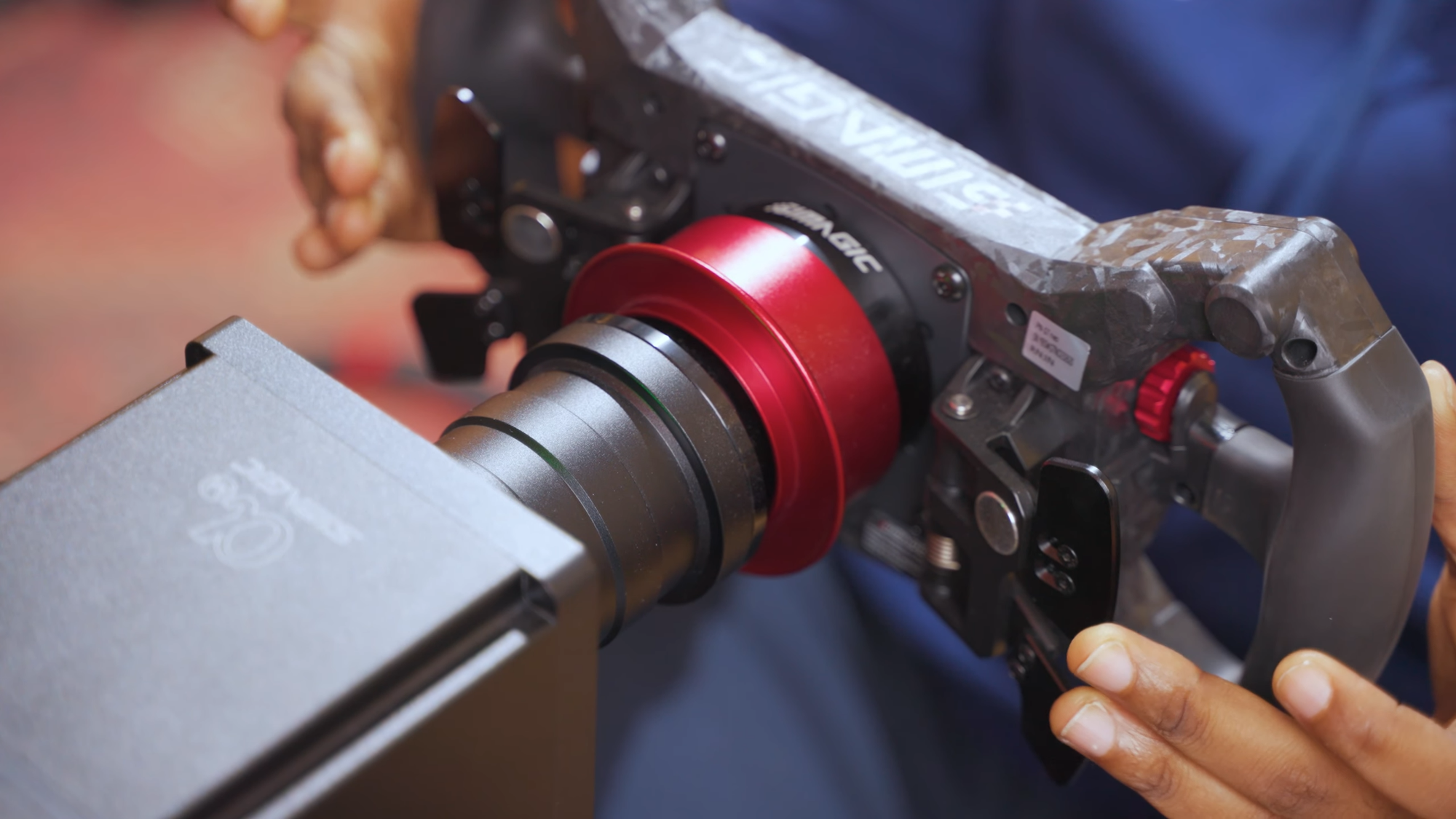
Ground Control: The Pedals
For my pedals, I picked up the P1000 Pedals because it offered extensive customization options to fine-tune the tension of the brake, clutch, and throttle pedals.
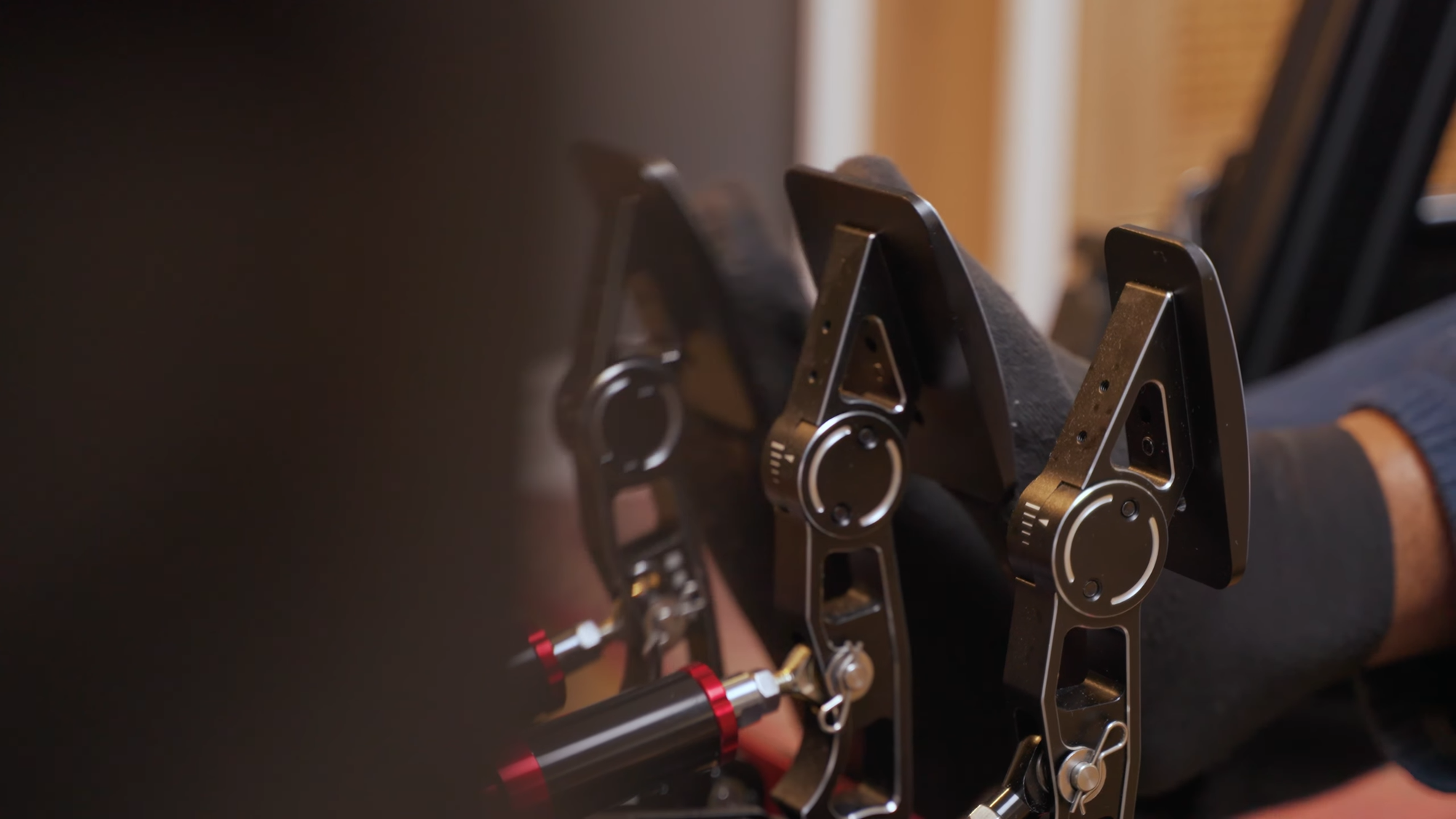
I spent most of my time researching and tuning in the tension of the brake clutch and throttle pedals with the spare elastomers and springs that come right in the box.
While I'm a total newbie when it comes to sim racing, I felt like the stock tension of the throttle was a bit too soft and not realistic, so I kept switching the springs until I found one that felt somewhat realistic. I have the brakes set to a sort of medium tension with these elastomers but I really appreciate the level of flexibility to customize the tension in all of the pedals.
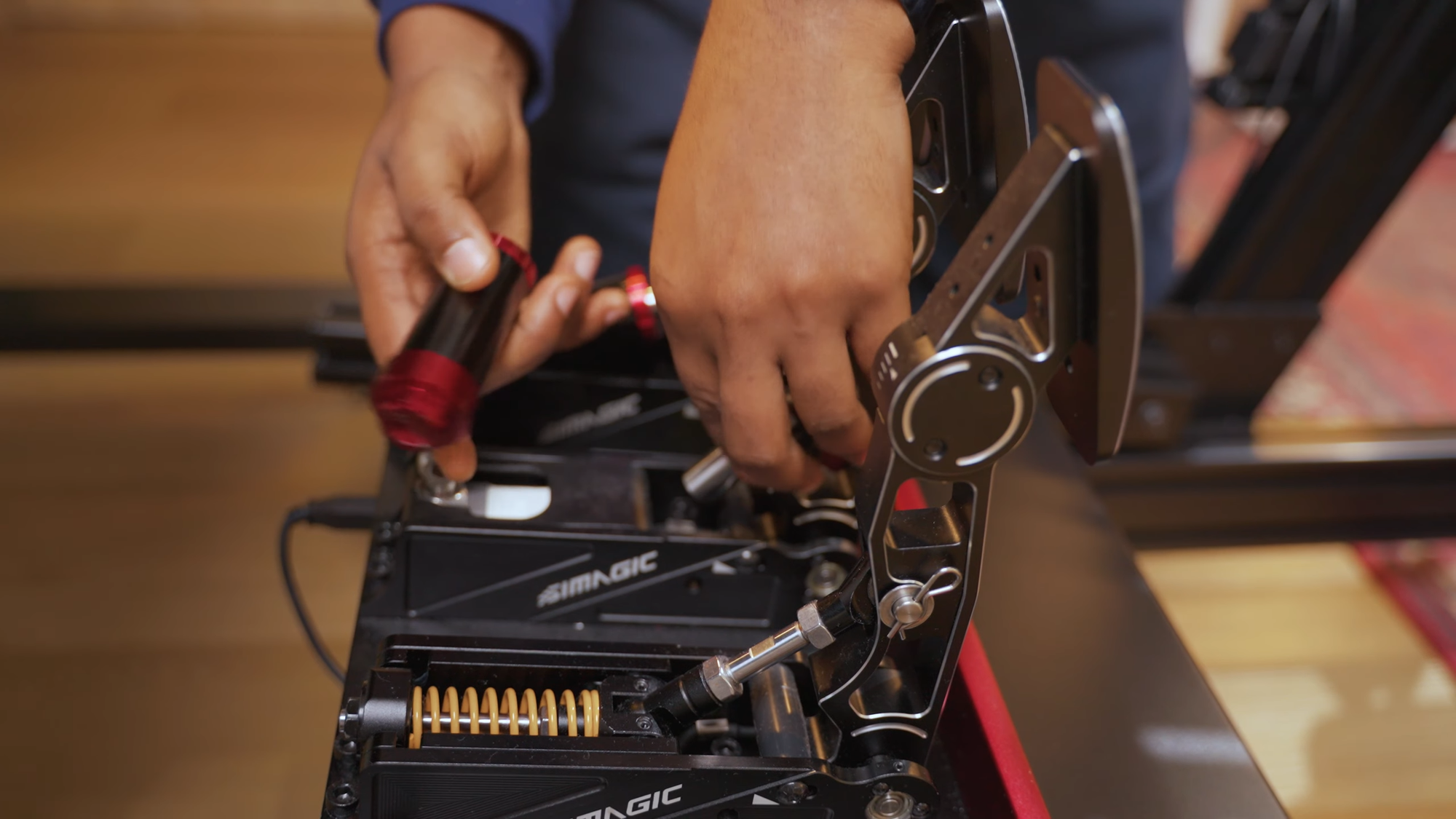
Comfort First: The Seat
My seat is the ERS1 Seat from Next Level Racing. To be honest, I didn't do a lot of research when I was picking out a seat for the cockpit. I just wanted something clean and comfortable enough to sit in for hours. The ESR1 ticks all of the boxes.
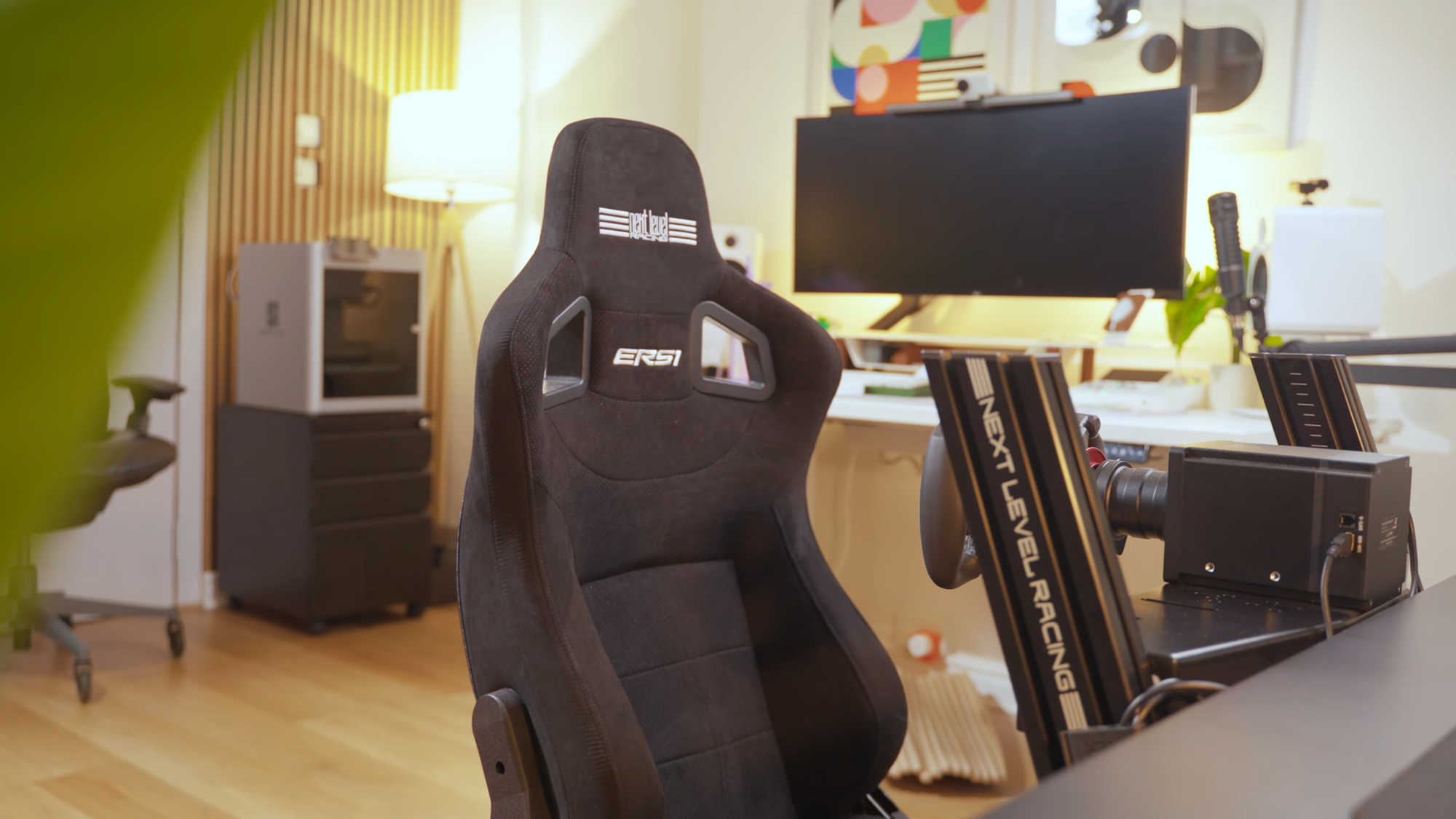
It is also easy to set up with the paddle underneath the seat to adjust your sitting distance and a lever to control the recline angle. These features ensure you can find the optimal driving position with minimal effort.
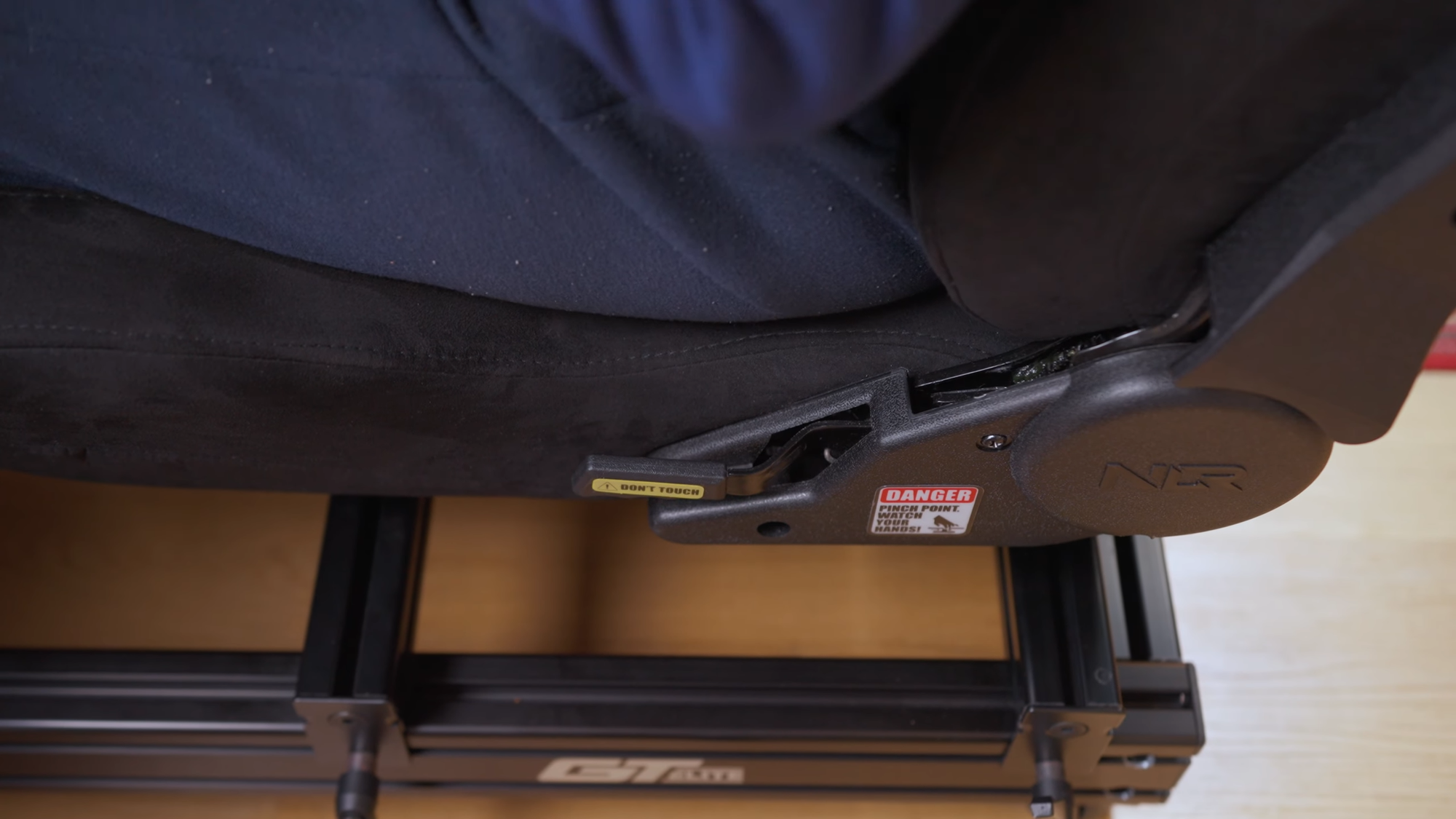
My only gripe with the ESR1 is that it's covered with suede, and I'm not a big fan of suede because of how weird it looks when it's dusty. I feel like leather is just much easier to maintain.
Visual Immersion: The Display
While I’m using a 32-inch monitor, the LG GS95 UE, I’m looking to upgrade to an ultra-wide monitor mounted directly to the cockpit for the full immersive experience but for now, I'm working with what I've got and this just works.
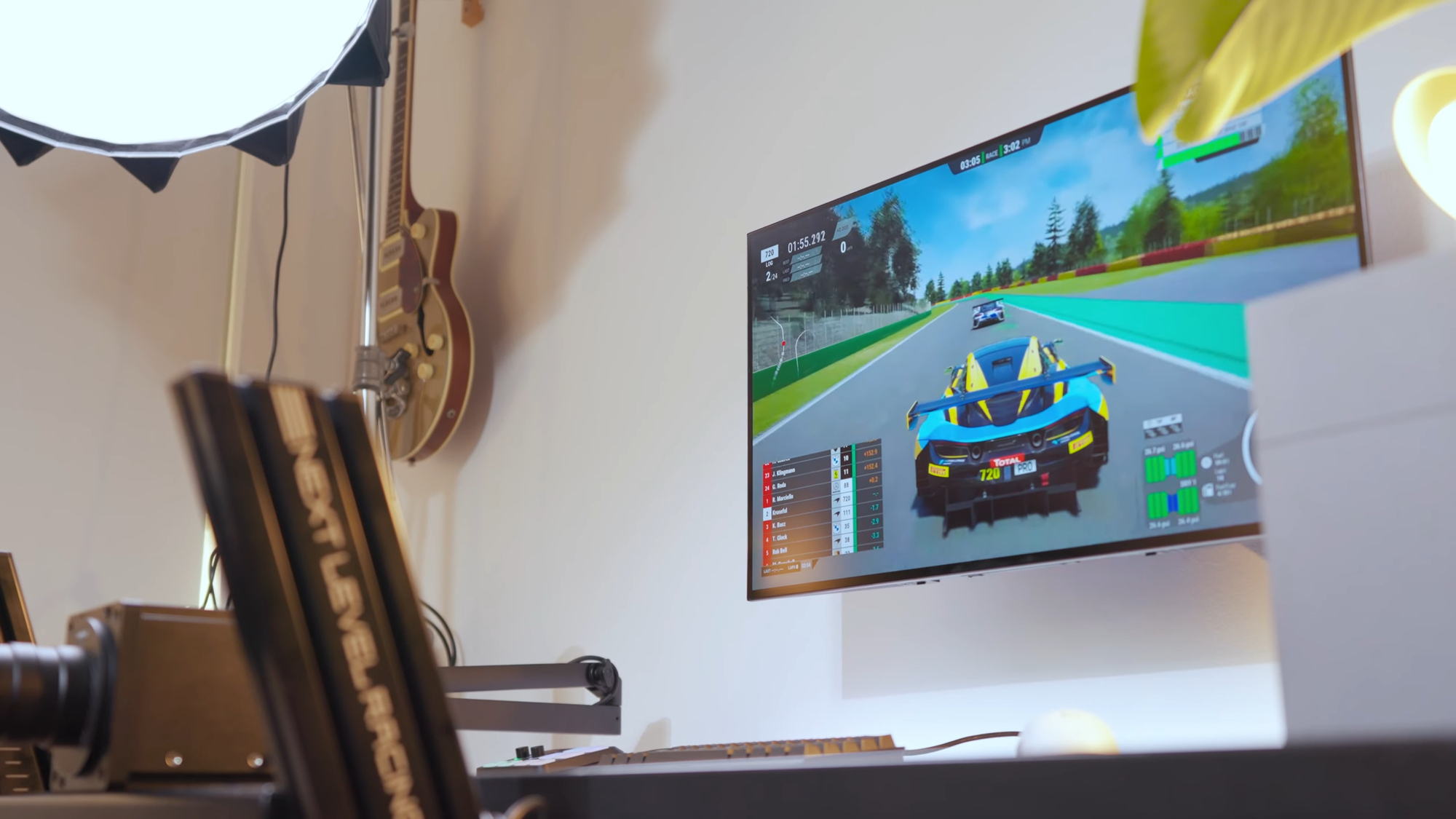
Final Thoughts
At the moment, I'm mainly playing ACC hence the reason why I went for this F1 and GT wheel style but in the future, I really want to try rally racing and for that, I picked up the Sim magic GTS wheel to build something similar.
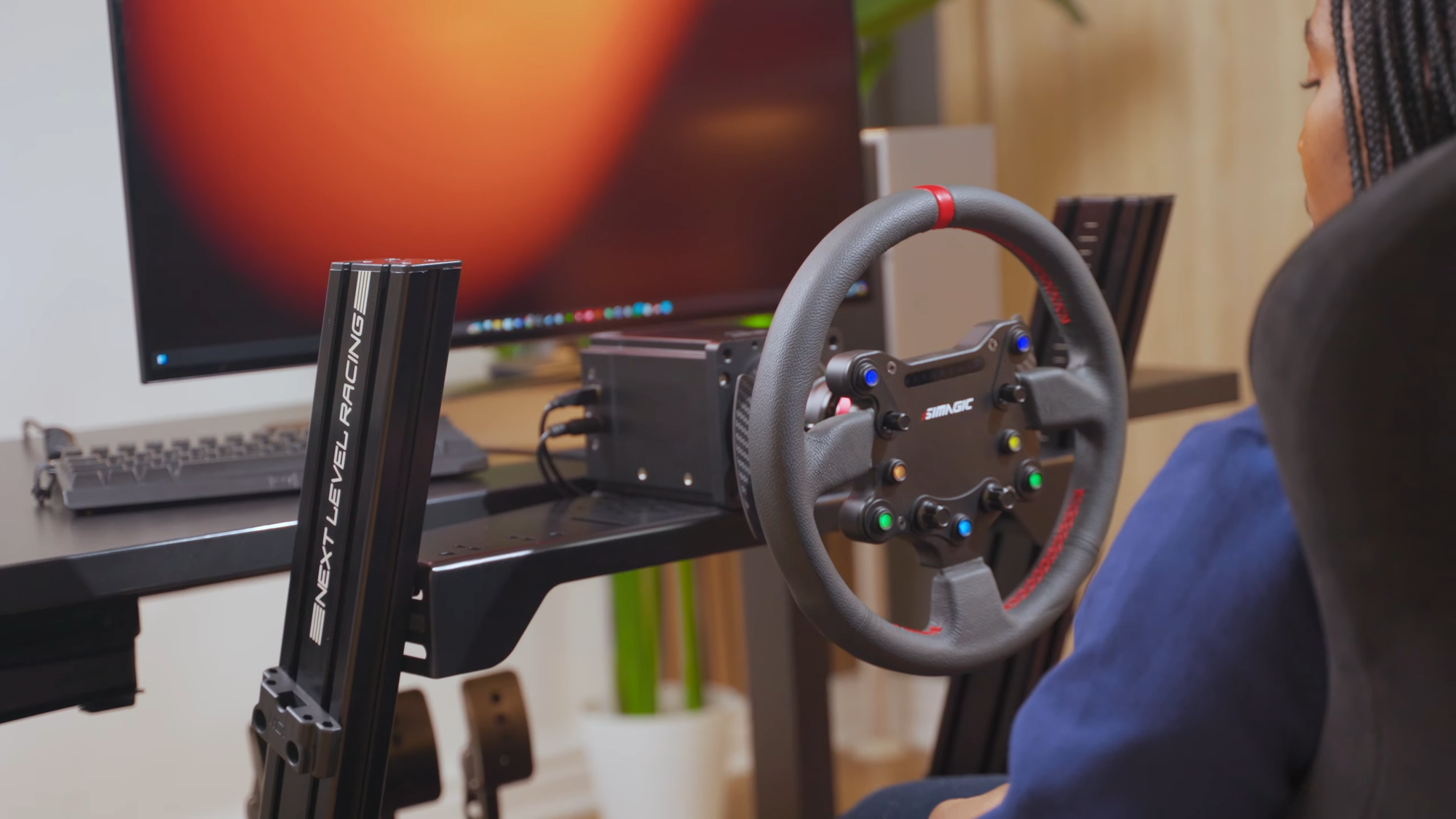
I haven’t quite decided where I'd like to permanently place this rig, but I decided to install wheels to make moving it around a little easier.
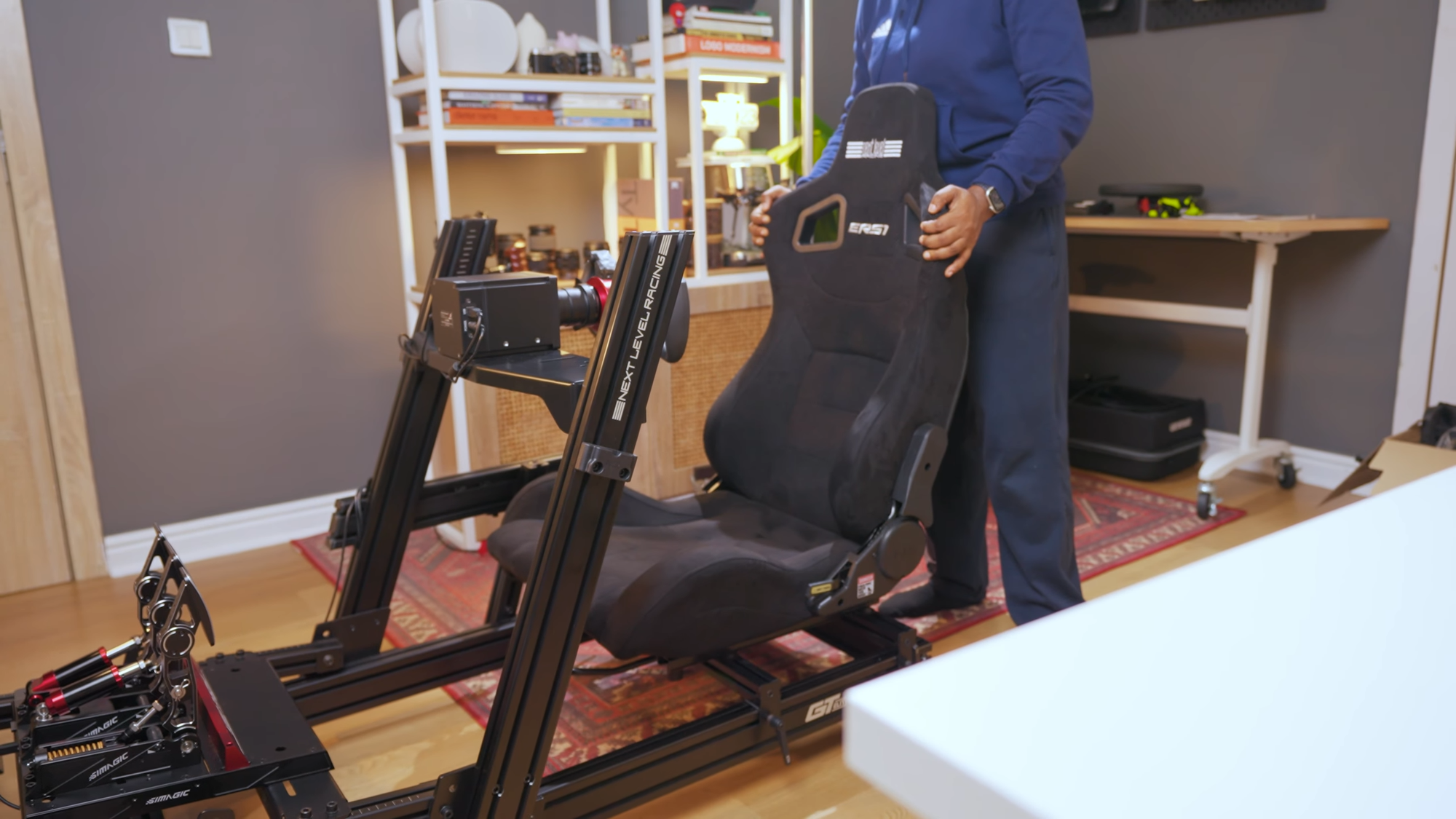
So far, I’ve enjoyed playing ACC (Assetto Corsa Competizione) and Assetto Corsa, thanks to the community for the endless modding possibilities. I also love how the force feedback translates smoothly through the wheelbase, even though I’m still tuning and dialing in all the settings on the wheelbase using the Simhub app. Before building this rig, I played games like Forza and Grid Legends, which weren’t really on the simulator end of the gaming spectrum. I should mention that none of these components are directly compatible with a console, so I've had to sacrifice playing Grand Turismo until (if) they make a PC version.
In the future, I am looking to try the Simagic haptic reactors for the pedals because they seem like a really interesting upgrade to the pedals at $59 per reactor.
In conclusion, remember, the journey of building your simulator is as much about personalization as it is about performance. Don't hesitate to experiment with different configurations and settings to find what works best for you. Happy racing!



